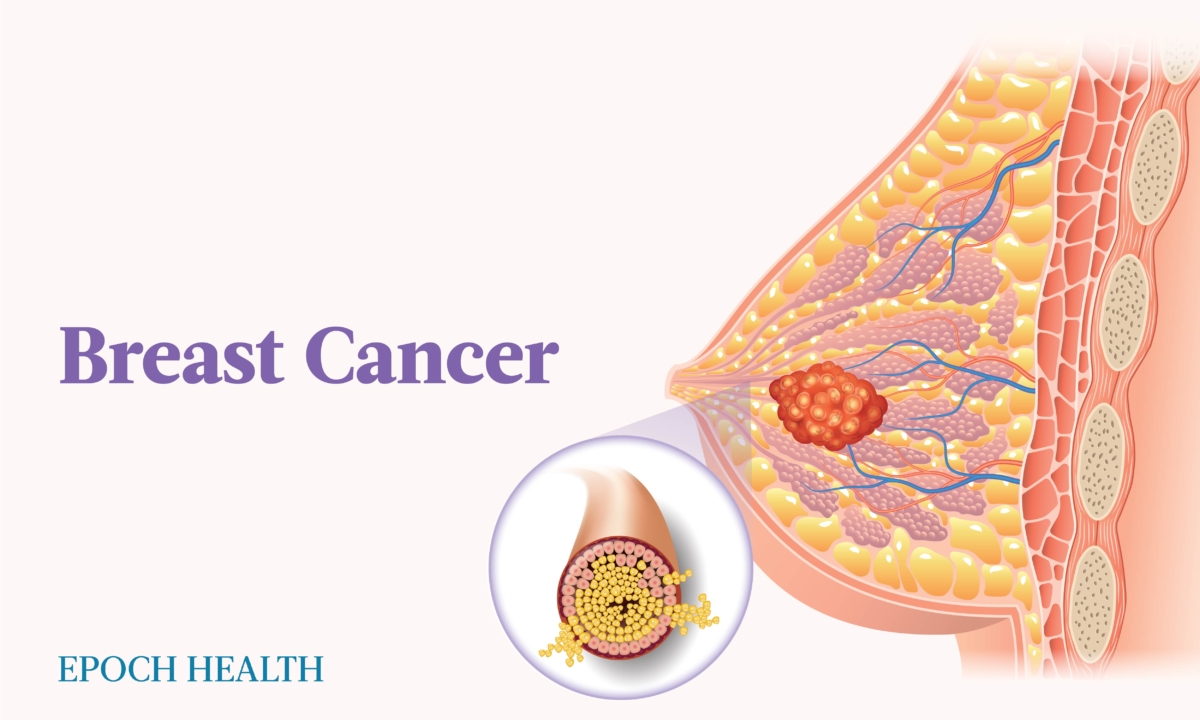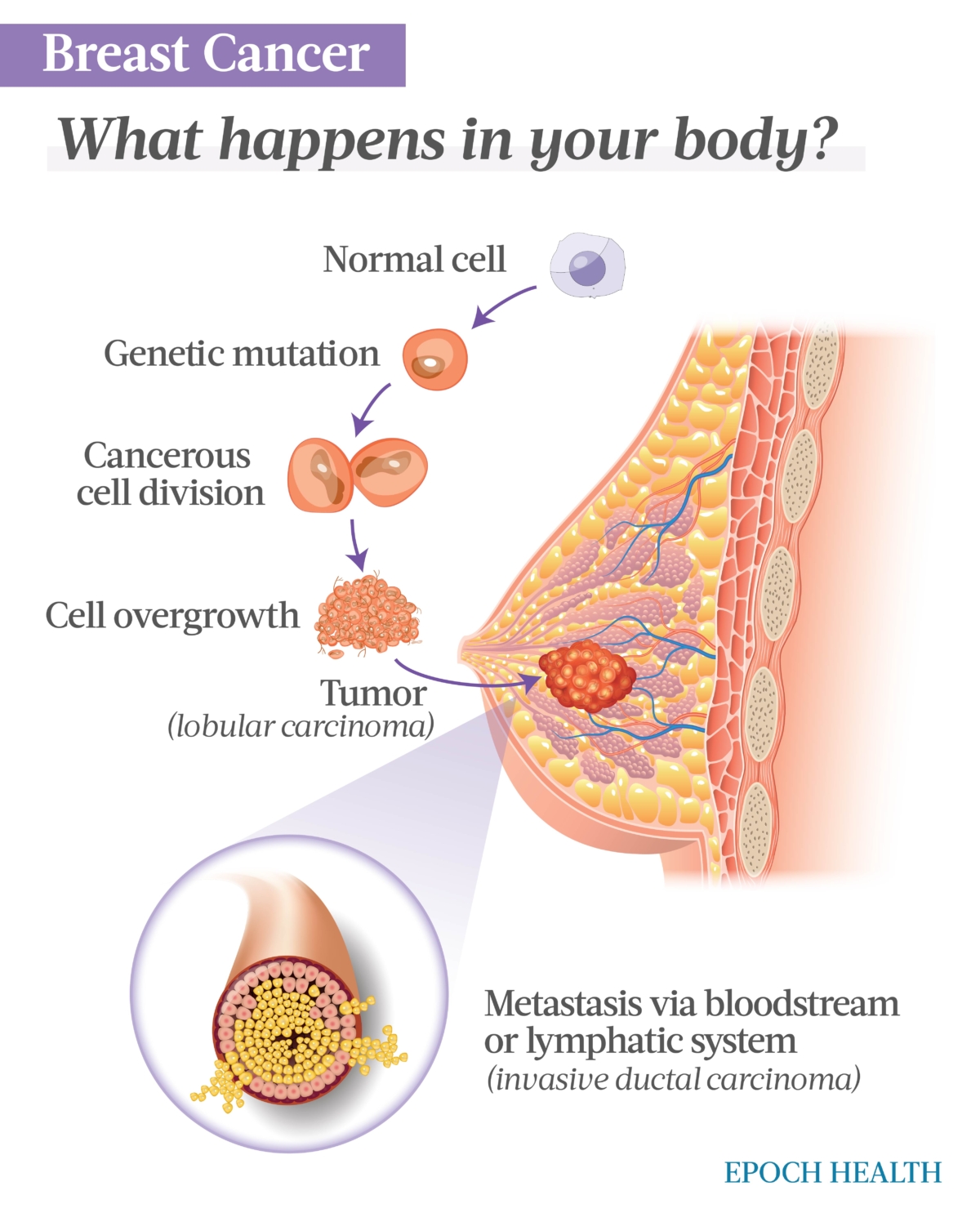


The iconic pink ribbon: You would be hard-pressed to find someone who doesn’t know what it symbolizes, and there’s a reason. Aside from skin cancers, breast cancer is the most commonly diagnosed cancer among American women and the most common cancer globally, accounting for 12.5 percent of annual diagnoses. It is a complex disease originating in the breast tissue that occurs when abnormal cells within the breast multiply and grow uncontrollably.
In the United States, it is the second leading cause of cancer death in women, accounting for 1 in 3 of all newly diagnosed women’s cancers annually. Over 43,000 American women are expected to die from the disease each year.
The breast comprises three main kinds of tissues: glandular, ductal, and connective. Breasts also contain lymphatic tissue. How breast cancer is categorized depends on where it originated.
Understanding the differences in these tissues can help you recognize any abnormalities that may alert health practitioners to the presence of breast cancer.
The breast is comprised of the following tissues:
Breast cancer has many different types, but four are the most common. Knowing the differences between types can help individuals and health care professionals come to a diagnosis and outline a treatment plan.
Many types of breast cancer mention “in situ,” which means “in the original place.” Below are some of the most common types of breast cancer:
Lesser-known or rare types of breast cancer include:
Early detection of breast cancer significantly improves treatment outcomes. This is why it is so important to know and understand what to look for regarding this disease’s early signs and symptoms.
These early signs include:
Any changes in one or both breasts warrant visiting your health care provider.
Though researchers still have more to understand regarding the exact mechanisms behind breast cancer development, a complex link between genetics and environment is thought to be a primary driver. Only about 1 in 10 cases of breast cancer is linked to known inherited genes, but many genes that could also contribute to this disease remain to be discovered.
The human body is made up of trillions of cells. These cells work together harmoniously to keep the body in homeostasis, or internal balance. Cells age, and old ones naturally die and are replaced by new ones. This is a process known as cellular regeneration.
Sometimes the DNA inside the cell becomes damaged, causing the malfunctioning cell to multiply rapidly. Without the control mechanisms usually established by the cell’s DNA, a clump of defective cells called a tumor can form. This process can result in cancer.
While it is not fully known or understood what spurs these mutations within the cell’s DNA, researchers have identified several important factors that greatly contribute to the development of breast cancer.
Breast cancer develops during the following process:
- Genetic change at the cellular level: These mutations can be inherited from one’s parents or occur spontaneously.
- Rapid cell division: Next, rapid division and growth of damaged cells begin. Changes within the DNA’s structure disrupt the cells’ normal growth constraints, and the division of the defective cells becomes unstoppable.
- Tumor formation: A tumor composed of damaged cells begins to form and grow within the breast tissue. In breast cancer cases, it is most common for these rapidly growing cells to formulate tumors in lobular or ductal tissues. Breast tumors can also be classified as invasive or noninvasive depending on whether they have spread to surrounding tissues.
- Invasion of surrounding tissues and metastasis: Invasive breast cancer occurs when cancer cells break through the walls of the lobules or ducts, infiltrating the surrounding tissues. If left untreated, invasive breast cancer has the potential to spread to other areas of the body via the lymphatic system or bloodstream. This is known as metastasis.
Breast cancer develops in stages. Knowing these stages is vital in mapping out a treatment plan with your health care providers. Once breast cancer has been diagnosed, the next step is determining how much the cancer has spread. This complex process is known as staging. Factors used in staging include tumor size, lymph node involvement, spread (metastasis to distant sites), hormone receptors of the cells, and appearance (grade) of the individual cells.
Examples of breast cancer staging include:The development of breast cancer is influenced by many different factors, which include:
Having one or more risk factors does not guarantee the development of breast cancer. In fact, many people live their whole lives with multiple risk factors present and never develop this disease. Continued research is essential for improving early detection methods and subsequent treatments of breast cancer.
Yes, men can develop breast cancer. Although the risk is significantly lower than in women, it is still essential for men to speak with their health care providers about any changes they may notice in their breast tissue.
The signs, symptoms, and causes of breast cancer in men are the same as in women.
Several tests and procedures can help health care professionals detect abnormalities and determine whether cancer is present. This is why speaking with your health care provider regularly about your breast health is critical.
Even with no apparent signs and symptoms of breast cancer, keep up with regular breast health screenings, especially after age 40.
Detecting breast cancer early makes a world of difference in treatability and outcomes. The following tests can help screen for breast cancer:
A breast cancer diagnosis can lead to several complications that can affect physical, mental, and emotional well-being. Complications can vary greatly depending on the stage and type of breast cancer, its location, and how it’s being treated.
Here are some common complications associated with breast cancer and its treatment:
Physicians must monitor a patient for all these complications during breast cancer treatment.
The treatment for breast cancer depends on several factors. These include the location, type, and stage of the cancer. Personal preferences are also taken into account when developing a plan of care.
Treatments for breast cancer can include:
Treatment plans should be highly individualized to achieve the best possible outcomes.
Coping strategies for the diagnosis of breast cancer should take into account the mind, body, and spirit. As more and more evidence comes out supporting the profound mind, body, and spirit connection, it is becoming clear that mindset plays a huge role in a patient’s treatment and quality of life after a breast cancer diagnosis.
Research suggests a resilient, positive mindset plays a role in coping with diagnosis and treatment. It also helps with achieving a better quality of life (pdf). Feeling like one has a consistent support system is crucial in cultivating a resilient mindset.
A positive mindset in breast cancer treatment has been linked to the following:
Many people with breast cancer are open to trying alternative remedies beyond the typical treatments recommended by their doctors. These remedies and treatments are gaining more prevalence and popularity as patients become more educated in all areas of their health.
These natural therapies can also be used with Western medical treatments and even help mitigate some of their side effects.
Vitamin and mineral supplementation can help keep the body balanced and functioning correctly.
There are many conventional treatments for breast cancer, such as surgery, chemotherapy, and radiation. Natural treatments, such as herbal medicine, can also help improve symptoms, counteract adverse side effects of treatments, and help improve prognosis and outlook.
Since the dawn of time, herbal remedies have been a part of our approach to treating and preventing disease. Some herbal remedies that support the treatment and healing of breast cancer include:
Working closely with your health care providers to implement the best care plan for your needs is always recommended. These alone are not complete treatments for breast cancer; instead, they are complements to help in the healing and recovery process.
While the exact precipitating factor that allows for the generation of cancerous cells is unknown, many things can be done to offset the risk of developing breast cancer.
The prevention of this disease starts with the cultivation of healthy lifestyle habits. It is also essential to go for regular breast cancer screenings as part of a yearly comprehensive health checkup.
There are several ways to help reduce your risk of developing breast cancer, including:
Medically reviewed by Beverly Timerding, MD.


